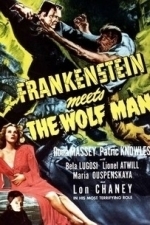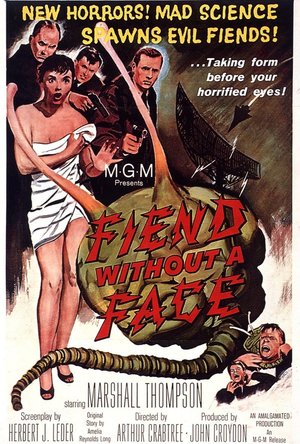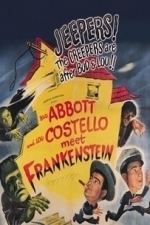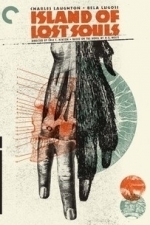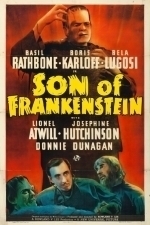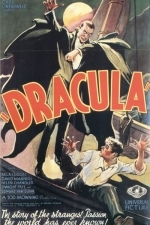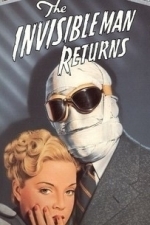Search
Matthew Krueger (10051 KP) rated Frankenstein Meets the Wolf Man (1943) in Movies
Oct 15, 2020
Lon Chaney Jr. (1 more)
Bela Lugosi
Huge Disappointment
Contains spoilers, click to show
Frankenstien Meets The Wolf Man- was a huge disappointment but ill get to that later. First lets talk about the film.
The plot: Lawrence Stewart Talbot (Lon Chaney Jr.) is plagued by a physical oddity that turns him into a crazed werewolf after sundown. His desire to rid himself of this ailment leads him to the castle owned by mad scientist Dr. Frankenstein. Frankenstein, it turns out, is now dead, yet Talbot believes that the scientist's daughter, Baroness Elsa Frankenstein (Ilona Massey), can help him. However, his quest to right himself puts him on a collision course with Frankenstein's monster (Bela Lugosi).
This was the first of a series of "ensemble" monster films combining characters from several film series. This film, therefore, is both the fifth in the series of films based upon Mary Shelley's 1818 book Frankenstein; or, The Modern Prometheus, directly after The Ghost of Frankenstein, and a sequel to The Wolf Man.
As ultimately edited and released, Frankenstein Meets the Wolf Man is told in two almost equal parts. The opening scenes tell the story of Talbot's resurrection, killing spree, hospitalization, and escape across Europe. Much time is spent with a secondary policeman, Inspector Owen, and on scenes with a desperate Talbot hospitalized by Dr. Mannering. The discovery of the Monster and pursuit of Dr. Frankenstein's scientific notes do not begin until thirty-five minutes into the film. The second half introduces the Monster, Elsa, and the village of Vasaria and its inhabitants.
Immediately following his success in Dracula, Bela Lugosi had been the first choice to play the Monster in Universal's original Frankenstein film, but Lugosi famously turned down the nonspeaking, heavily made-up role: as conceived by the original director Robert Florey, the Monster was nothing more than a mindless killing machine and not suitable for Lugosi's rising stardom and career as a leading actor, and the original make-up for Lugosi's screen test was closely based on the doll-like clay robot in The Golem.
Eight years later, Lugosi joined the film as the Monster's twisted companion Ygor in Son of Frankenstein. He returned to the role in the sequel, The Ghost of Frankenstein, in which Ygor's brain is implanted into the Monster (now Chaney), causing the creature to take on Lugosi/Ygor's voice. After plans for Chaney to play both the Monster and the Wolf Man in the next film fell through for logistical reasons (Chaney demurred), the natural next step was for Lugosi, who turned 60 during the film's production, to take on the part that he once was slated to originate.
The original script — and indeed the film as originally filmed — had the Monster performing dialogue throughout the film, including references to the events of Ghost and indicating that the Monster is now blind (a side effect of the brain transplant as revealed at the end of the previous film, and the reason for his iconic stiff-armed "Frankenstein walk"). According to Siodmak, a studio screening audience reacted negatively to this, finding the idea of the Monster speaking with a Hungarian accent unintentionally funny (although the Monster spoke with Lugosi's voice at the end of Ghost, the audiences had been carefully prepared for it by the plot of the film). This has been generally accepted as the reason virtually all scenes in which Lugosi speaks were deleted (though two brief scenes remain in the film that show Lugosi's mouth moving without sound). All references to his being blind were also eliminated, rendering the Monster's groping gestures unmotivated for those unfamiliar with the ending of the previous film. Close-ups of Lugosi's eyes during the revitalization scene and his evil, knowing leer to Patric Knowles were supposed to indicate that his vision had been restored, but in the ultimate context of the film this means nothing. Consequently, Lugosi is onscreen literally for only a few minutes, leaving the Wolf Man as the film's primary focus.
Lugosi suffered exhaustion at some point during the filming, and his absence from the set, combined with his physical limitations at age 60, required the liberal use of stand-ins.
This would be the final Universal horror film in which the Monster played a major role; in the subsequent films The House of Frankenstein and House of Dracula, the Monster, played by Glenn Strange, is brought back to life only in the final scenes (in the 1948 Universal comedy Abbott and Costello Meet Frankenstein (the second and final film in which Lugosi plays Dracula), Strange has a larger role and the creature once again speaks, albeit with very limited dialogue, twice muttering, "Yes, Master."). It was also the last Universal horror film to feature an actual member of the Frankenstein family as a character.
A tribute to this meeting of two horror film legends happens near the beginning of the film Alien vs. Predator, when this film is seen playing on a television at the satellite receiving station. In the US version of the 1962 film King Kong vs. Godzilla (another pairing of prominent monsters), the music from the fight scene at the end of the film also plays during the final fight between Godzilla and Kong.
So the reason why this movie was a huge disappointments that it was universal first ensemble. A meet between two iconic monsters and boy did it disappointment. Their didnt meet until the last 5 minutes, no scratch that the last minute. Yes you read that right, the last minute their meet. Huge disappointment. It was also slow. I dont recordmend watching this one and skip it. The only reason im giving it a 5 is because of Lon Chaney Jr. and Bela Lugosi.
The plot: Lawrence Stewart Talbot (Lon Chaney Jr.) is plagued by a physical oddity that turns him into a crazed werewolf after sundown. His desire to rid himself of this ailment leads him to the castle owned by mad scientist Dr. Frankenstein. Frankenstein, it turns out, is now dead, yet Talbot believes that the scientist's daughter, Baroness Elsa Frankenstein (Ilona Massey), can help him. However, his quest to right himself puts him on a collision course with Frankenstein's monster (Bela Lugosi).
This was the first of a series of "ensemble" monster films combining characters from several film series. This film, therefore, is both the fifth in the series of films based upon Mary Shelley's 1818 book Frankenstein; or, The Modern Prometheus, directly after The Ghost of Frankenstein, and a sequel to The Wolf Man.
As ultimately edited and released, Frankenstein Meets the Wolf Man is told in two almost equal parts. The opening scenes tell the story of Talbot's resurrection, killing spree, hospitalization, and escape across Europe. Much time is spent with a secondary policeman, Inspector Owen, and on scenes with a desperate Talbot hospitalized by Dr. Mannering. The discovery of the Monster and pursuit of Dr. Frankenstein's scientific notes do not begin until thirty-five minutes into the film. The second half introduces the Monster, Elsa, and the village of Vasaria and its inhabitants.
Immediately following his success in Dracula, Bela Lugosi had been the first choice to play the Monster in Universal's original Frankenstein film, but Lugosi famously turned down the nonspeaking, heavily made-up role: as conceived by the original director Robert Florey, the Monster was nothing more than a mindless killing machine and not suitable for Lugosi's rising stardom and career as a leading actor, and the original make-up for Lugosi's screen test was closely based on the doll-like clay robot in The Golem.
Eight years later, Lugosi joined the film as the Monster's twisted companion Ygor in Son of Frankenstein. He returned to the role in the sequel, The Ghost of Frankenstein, in which Ygor's brain is implanted into the Monster (now Chaney), causing the creature to take on Lugosi/Ygor's voice. After plans for Chaney to play both the Monster and the Wolf Man in the next film fell through for logistical reasons (Chaney demurred), the natural next step was for Lugosi, who turned 60 during the film's production, to take on the part that he once was slated to originate.
The original script — and indeed the film as originally filmed — had the Monster performing dialogue throughout the film, including references to the events of Ghost and indicating that the Monster is now blind (a side effect of the brain transplant as revealed at the end of the previous film, and the reason for his iconic stiff-armed "Frankenstein walk"). According to Siodmak, a studio screening audience reacted negatively to this, finding the idea of the Monster speaking with a Hungarian accent unintentionally funny (although the Monster spoke with Lugosi's voice at the end of Ghost, the audiences had been carefully prepared for it by the plot of the film). This has been generally accepted as the reason virtually all scenes in which Lugosi speaks were deleted (though two brief scenes remain in the film that show Lugosi's mouth moving without sound). All references to his being blind were also eliminated, rendering the Monster's groping gestures unmotivated for those unfamiliar with the ending of the previous film. Close-ups of Lugosi's eyes during the revitalization scene and his evil, knowing leer to Patric Knowles were supposed to indicate that his vision had been restored, but in the ultimate context of the film this means nothing. Consequently, Lugosi is onscreen literally for only a few minutes, leaving the Wolf Man as the film's primary focus.
Lugosi suffered exhaustion at some point during the filming, and his absence from the set, combined with his physical limitations at age 60, required the liberal use of stand-ins.
This would be the final Universal horror film in which the Monster played a major role; in the subsequent films The House of Frankenstein and House of Dracula, the Monster, played by Glenn Strange, is brought back to life only in the final scenes (in the 1948 Universal comedy Abbott and Costello Meet Frankenstein (the second and final film in which Lugosi plays Dracula), Strange has a larger role and the creature once again speaks, albeit with very limited dialogue, twice muttering, "Yes, Master."). It was also the last Universal horror film to feature an actual member of the Frankenstein family as a character.
A tribute to this meeting of two horror film legends happens near the beginning of the film Alien vs. Predator, when this film is seen playing on a television at the satellite receiving station. In the US version of the 1962 film King Kong vs. Godzilla (another pairing of prominent monsters), the music from the fight scene at the end of the film also plays during the final fight between Godzilla and Kong.
So the reason why this movie was a huge disappointments that it was universal first ensemble. A meet between two iconic monsters and boy did it disappointment. Their didnt meet until the last 5 minutes, no scratch that the last minute. Yes you read that right, the last minute their meet. Huge disappointment. It was also slow. I dont recordmend watching this one and skip it. The only reason im giving it a 5 is because of Lon Chaney Jr. and Bela Lugosi.
Dave Filipi recommended Fiend Without a Face (1958) in Movies (curated)
Matthew Krueger (10051 KP) rated Abbott and Costello Meet Frankenstein (1948) in Movies
Mar 6, 2020
The House of Horrors
Abbott and Costello Meet Frankenstein- is such a classic horror movie mixed with humor, comedy, sci-fi and is in the universal monster universe. Plus this has Lon Chaney Jr. as The Wolfman, Bela Lugosi as Dracula, Glenn Strange as Frankenstein and Vincent Price as the voice of the Invisible Man. OMG so many horror icons/legends within one movie. Love it.
The Plot: In the first of Bud Abbott and Lou Costello's horror vehicles for Universal Pictures, the inimitable comic duo star as railway baggage handlers in northern Florida. When a pair of crates belonging to a house of horrors museum are mishandled by Wilbur (Lou Costello), the museum's director, Mr. MacDougal (Frank Ferguson), demands that they deliver them personally so that they can be inspected for insurance purposes, but Lou's friend Chick (Bud Abbott) has grave suspicions.
Its funny, entertaining, thrilling, and overall excellent. If you havent seen it, than go and watch it.
The Plot: In the first of Bud Abbott and Lou Costello's horror vehicles for Universal Pictures, the inimitable comic duo star as railway baggage handlers in northern Florida. When a pair of crates belonging to a house of horrors museum are mishandled by Wilbur (Lou Costello), the museum's director, Mr. MacDougal (Frank Ferguson), demands that they deliver them personally so that they can be inspected for insurance purposes, but Lou's friend Chick (Bud Abbott) has grave suspicions.
Its funny, entertaining, thrilling, and overall excellent. If you havent seen it, than go and watch it.
R.L. Stine recommended Island of Lost Souls (1933) in Movies (curated)
Rob Zombie recommended Dracula (1958) in Movies (curated)
Matthew Krueger (10051 KP) rated Son of Frankenstein (1939) in Movies
Oct 9, 2020
Boris Karloff (3 more)
Bela Lugosi
Basil Rathbone
Lionel Atwill
The Monster's Alive Once More
Son of Frankenstein- is a great continuation of the frankenstein franchise. Boris Karloff os back as the monster but this would be the last time he would play the monster in the universal monster universe. Its sad cause when you think of frankenstein, you think of Boris.
The plot: Baron Wolf von Frankenstein (Basil Rathbone) is determined to prove the legitimacy of his father's scientific work, thus rescuing the family name from disgrace. With the help of Ygor (Bela Lugosi), a grave robber, Wolf successfully reanimates the monster (Boris Karloff) his father originally brought back from the dead. But when several villagers are killed mysteriously, Wolf must find the culprit in order to vindicate his creation, or face the possibility that he may be responsible.
Universal's declining horror output was revitalized with the enormously successful Son of Frankenstein, in which the studio cast both stars.
After the ousting of the Laemmles from Universal and the British embargo on American horror films in 1936, Karloff and Lugosi found themselves in a career slump. For two years, horror films were out of favor at Universal Studios. On April 5, 1938, a nearly bankrupt theater in Los Angeles staged a desperate stunt by showing Frankenstein, Dracula and King Kong as a triple feature. The impressive box office results led to similarly successful revivals nationwide. Universal soon decided to make a big-budget Frankenstein sequel.
Son of Frankenstein marks changes in the Monster's character from Bride of Frankenstein. The Monster is duller and no longer speaks, explained by being injured by a lightning strike. The monster also wore a giant fur vest, not seen in the first two Frankenstein films, perhaps to add color to his appearance when the film was planned to be shot in color. He is fond of Ygor and obeys his orders. The Monster shows humanity in three scenes: first when he is disturbed by his image in a mirror, especially when compared to the Baron. Next, when he discovers Ygor's body, letting out a powerful scream, and later when he contemplates killing Peter but changes his mind. While the first two films were clearly set in the 1900s, this film appears to take place in the 1930s, judging by the appearance of a modern automobile.
Peter Lorre was originally cast as Baron Wolf von Frankenstein, but he had to leave the production when he became ill. Replacing Lorre was Basil Rathbone, who had scored a major triumph as Sir Guy of Gisbourne in The Adventures of Robin Hood, released the previous year.
According to the documentary Universal Horror (1998), the film was intended to be shot in color and some Technicolor test footage was filmed, but for artistic or budgetary reasons the plan was abandoned. No color test footage is known to survive, but a clip from a Kodachrome color home movie filmed at the studio and showing Boris Karloff in the green monster makeup, clowning around with makeup artist Jack Pierce, is included in the same documentary.
Its a excellent universal monster film.
The plot: Baron Wolf von Frankenstein (Basil Rathbone) is determined to prove the legitimacy of his father's scientific work, thus rescuing the family name from disgrace. With the help of Ygor (Bela Lugosi), a grave robber, Wolf successfully reanimates the monster (Boris Karloff) his father originally brought back from the dead. But when several villagers are killed mysteriously, Wolf must find the culprit in order to vindicate his creation, or face the possibility that he may be responsible.
Universal's declining horror output was revitalized with the enormously successful Son of Frankenstein, in which the studio cast both stars.
After the ousting of the Laemmles from Universal and the British embargo on American horror films in 1936, Karloff and Lugosi found themselves in a career slump. For two years, horror films were out of favor at Universal Studios. On April 5, 1938, a nearly bankrupt theater in Los Angeles staged a desperate stunt by showing Frankenstein, Dracula and King Kong as a triple feature. The impressive box office results led to similarly successful revivals nationwide. Universal soon decided to make a big-budget Frankenstein sequel.
Son of Frankenstein marks changes in the Monster's character from Bride of Frankenstein. The Monster is duller and no longer speaks, explained by being injured by a lightning strike. The monster also wore a giant fur vest, not seen in the first two Frankenstein films, perhaps to add color to his appearance when the film was planned to be shot in color. He is fond of Ygor and obeys his orders. The Monster shows humanity in three scenes: first when he is disturbed by his image in a mirror, especially when compared to the Baron. Next, when he discovers Ygor's body, letting out a powerful scream, and later when he contemplates killing Peter but changes his mind. While the first two films were clearly set in the 1900s, this film appears to take place in the 1930s, judging by the appearance of a modern automobile.
Peter Lorre was originally cast as Baron Wolf von Frankenstein, but he had to leave the production when he became ill. Replacing Lorre was Basil Rathbone, who had scored a major triumph as Sir Guy of Gisbourne in The Adventures of Robin Hood, released the previous year.
According to the documentary Universal Horror (1998), the film was intended to be shot in color and some Technicolor test footage was filmed, but for artistic or budgetary reasons the plan was abandoned. No color test footage is known to survive, but a clip from a Kodachrome color home movie filmed at the studio and showing Boris Karloff in the green monster makeup, clowning around with makeup artist Jack Pierce, is included in the same documentary.
Its a excellent universal monster film.
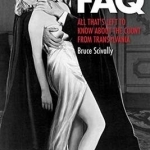
Dracula FAQ: All That's Left to Know About the Count from Transylvania
Book
Dracula FAQ unearths little-known facts about both the historical and literary Dracula. The...
LeftSideCut (3776 KP) rated Dracula (English) (1931) in Movies
Jul 6, 2020
It goes without saying that the importance of Dracula cannot be understated. Releasing in 1931, it was Universal Studios first steps into the horror genre, not long after 'talkies' became a thing, and surely paved the way for he mountain of horror titles that have come along since.
Bela Lugosi is Dracula, and though there have been fine portrayals of the titular vampire since, his performance lay the ground work for how a lot of media realise vampires to this day. He cuts a striking figure, he's suave and sinister, and the thick European accent is paramount to how he made Dracula a classic.
I first saw Dracula when I was a kid, and having watched it again recently, it's still a striking experience. While there may not be anything inherently frightening or scary by today's standards, the old black and white style, paired with long moments of uncomfortable silence (Director Tod Browning has exclusively worked on silent films before this), make for a suitably eerie atmosphere.
It's obviously a film that shows it age, but still hasn't lost any of it's charm. The version I watched recently was a Blu Ray restoration, and it's clear how lovingly that restoration has been implemented. Watching a film from the 30s look so crystal clear is something special.
Bela Lugosi is Dracula, and though there have been fine portrayals of the titular vampire since, his performance lay the ground work for how a lot of media realise vampires to this day. He cuts a striking figure, he's suave and sinister, and the thick European accent is paramount to how he made Dracula a classic.
I first saw Dracula when I was a kid, and having watched it again recently, it's still a striking experience. While there may not be anything inherently frightening or scary by today's standards, the old black and white style, paired with long moments of uncomfortable silence (Director Tod Browning has exclusively worked on silent films before this), make for a suitably eerie atmosphere.
It's obviously a film that shows it age, but still hasn't lost any of it's charm. The version I watched recently was a Blu Ray restoration, and it's clear how lovingly that restoration has been implemented. Watching a film from the 30s look so crystal clear is something special.
ZO
Zombies on Film
Book
ZOMBIES ON FILM chronicles popular culture s greatest and most terrifyingly intriguing monsters in...
Matthew Krueger (10051 KP) rated The Invisible Man Returns (1940) in Movies
Dec 7, 2020
See No Evil
The Invisible Man Returns- is a great sequel to "The Invisible Man". I love "The Invisible Man", he is in my opinion the best universal monster. He's funny, dramatic, crazy, and invisible.
The plot: Wrongly accused of murdering his brother, Geoffrey Radcliffe (Vincent Price) is found guilty and sentenced to die. But when sympathetic Dr. Griffin (John Sutton) injects him with a serum that renders him invisible, Radcliffe is able to escape and search for the real culprit. With Inspector Sampson (Cecil Kellaway) of Scotland Yard hot on his trail, Radcliffe begins to suspect that a recent hire in his family's mining company might have the answers he seeks.
Following the commercial success of Son of Frankenstein, Universal Studios announced the development of The Invisible Man Returns in March 1939.
In May, Joe May was announced as the director of the film with either Boris Karloff or Bela Lugosi hinted at playing the lead.
Vincent Price when he was not covered by bandages or special effects only appears as himself for one minute in the film. Price spoke on the film saying that the special effects were done with Price being draped in black velvet and working against a set draped in black velvet. Price also spoke about working with Hardwicke, who he recalled "didn't like doing this film; he was facing home problems at the time. We became very close."
Its a great movie.
The plot: Wrongly accused of murdering his brother, Geoffrey Radcliffe (Vincent Price) is found guilty and sentenced to die. But when sympathetic Dr. Griffin (John Sutton) injects him with a serum that renders him invisible, Radcliffe is able to escape and search for the real culprit. With Inspector Sampson (Cecil Kellaway) of Scotland Yard hot on his trail, Radcliffe begins to suspect that a recent hire in his family's mining company might have the answers he seeks.
Following the commercial success of Son of Frankenstein, Universal Studios announced the development of The Invisible Man Returns in March 1939.
In May, Joe May was announced as the director of the film with either Boris Karloff or Bela Lugosi hinted at playing the lead.
Vincent Price when he was not covered by bandages or special effects only appears as himself for one minute in the film. Price spoke on the film saying that the special effects were done with Price being draped in black velvet and working against a set draped in black velvet. Price also spoke about working with Hardwicke, who he recalled "didn't like doing this film; he was facing home problems at the time. We became very close."
Its a great movie.
